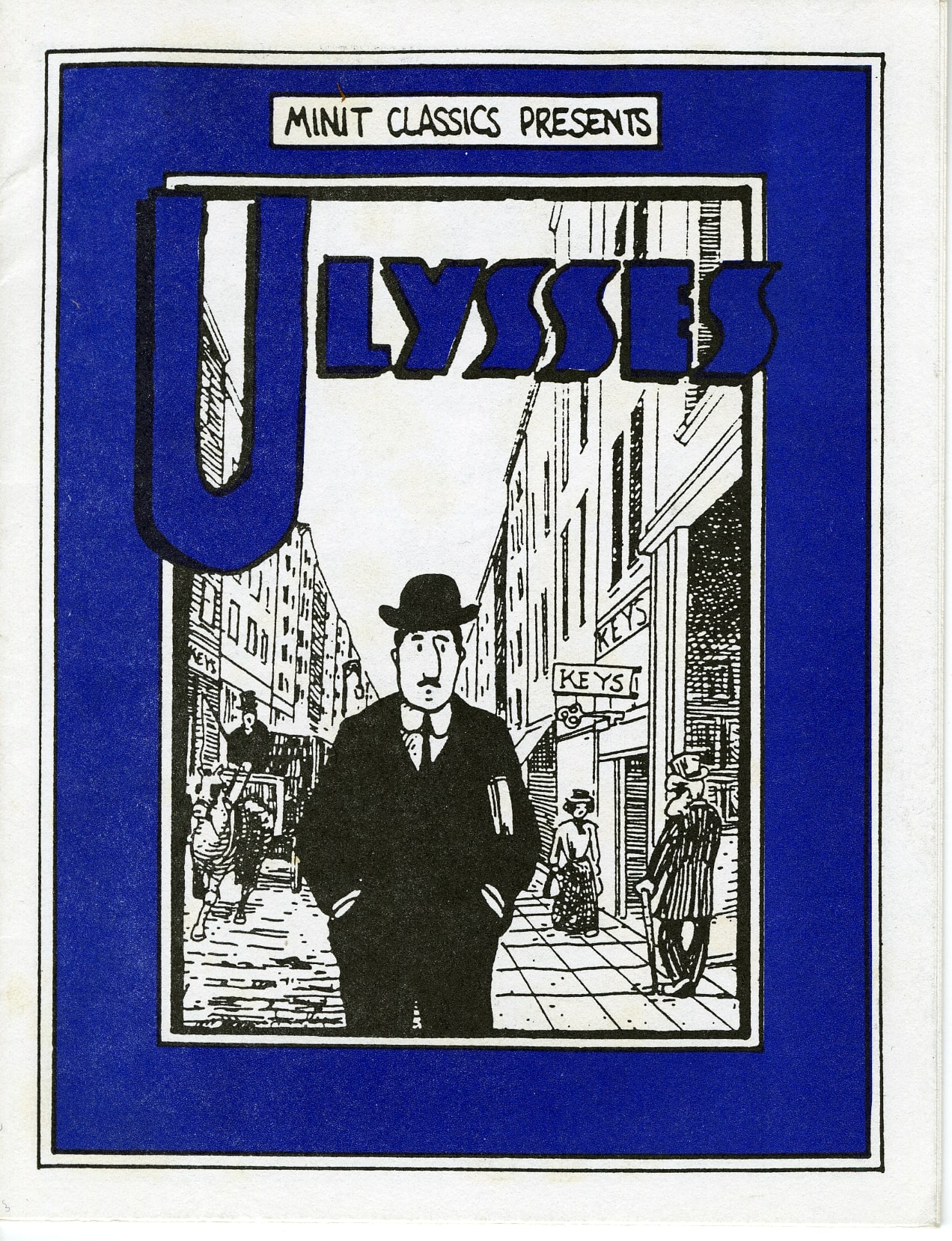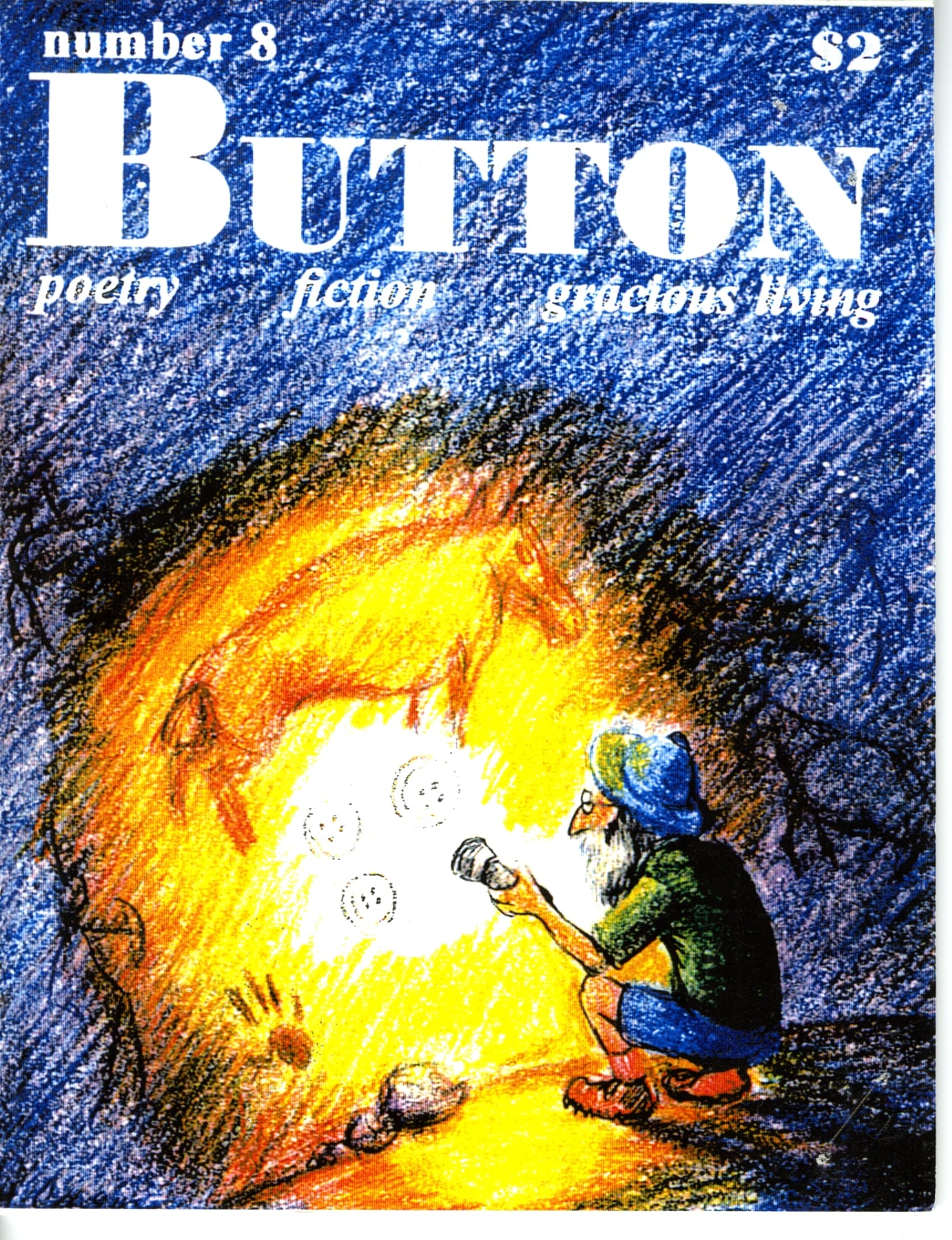How Zines take on the Classics
Sep 25th, 2018 by houghtonmodern
Cataloging work continues on Harvard College Library’s recently acquired collection of over 20,000 zines. Zines are non-commercial, non-professional and small-circulation publications that their creators produce, publish and either trade or sell themselves.
Zines, by their very nature, are unconventional in both form and content. So when zines address themes in classic literature, they often arrive at unusual and original views of those works.
 For instance, Animal Review is described as a “fanzine of herbivorous youth” started in 1993 by Nell Zink. It contains musings on, sketches of, and stories about various animals, with a few music reviews mixed in for good measure. It also occasionally discusses literary animals. A short article on Moby Dick praises Herman Melville for having “researched everything ever written about whales (up to 1850)” in writing the book, despite some gaps in his knowledge that seem more egregious in the present day, such as his lack of understanding that whales are mammals. Not only for his painstaking research into whales, but also for his impressive breadth of sea monster mythology, Melville is crowned “the original and supreme animal reviewer!” (Zink, 7).
For instance, Animal Review is described as a “fanzine of herbivorous youth” started in 1993 by Nell Zink. It contains musings on, sketches of, and stories about various animals, with a few music reviews mixed in for good measure. It also occasionally discusses literary animals. A short article on Moby Dick praises Herman Melville for having “researched everything ever written about whales (up to 1850)” in writing the book, despite some gaps in his knowledge that seem more egregious in the present day, such as his lack of understanding that whales are mammals. Not only for his painstaking research into whales, but also for his impressive breadth of sea monster mythology, Melville is crowned “the original and supreme animal reviewer!” (Zink, 7).
Two of Haruki Murakami’s novels, A Wild Sheep Chase and Hard Boiled Wonderland and the End of the World, are also reviewed positively on the back cover of this zine, due to the importance of animals in these stories. But in the very next issue of Animal Review, literary connections become a lot more abstract. On the cover of issue #8, the quote:
The future is a faded [newt], a Royal Rose or a lavender spray
Of wistful regret for those who are not yet here to regret
Pressed between yellow leaves of a book that has never been opened.
…is attributed to “Eliot,” and accompanied by the image of a newt which is indeed “pressed between…leaves of a book.” This quote, absent any reference to newts in its original form, is in fact taken from T.S. Eliot’s poem, “The Dry Salvages,” whereas Daniel Deronda, the book in which the newt finds himself pressed, is a work of George Eliot’s.
An article appearing later in the zine sheds light on this delightfully bizarre image. In “George Eliot’s newt connection,” Zink describes the axolotl (a type of salamander) and its potential for transformation into maturity after consuming thyroid glands, a transformation which he compares to Eliot’s own, from “one of those painfully immature Victorians who speak the language of flowers,” who “planned to devote her life to Protest fundamentalist contemplation” and “declared publicly that having sex (‘marriage’) would lead to an eternity in hell” to a woman “living in Italy with a cute married guy, writing novels with pagan and Jewish heroes, and acknowledging Sir Walter Scott as her spiritual master”—all of this after encountering Das Leben Jesu which Eliot translated from 1845 to 1846. As an afterthought, Zink claims that George Eliot “looked kind of like a newt, too” (Zink, 8).
Occasionally one encounters zines that have adapted literary classics. A striking example of this is David Lasky’s mini-comic, Ulysses, first published in 1991. At only about 10 pages —compared to Joyce’s work which usually clocks in around 730 pages— it is, as Lasky acknowledges, “by no means a substitute for the original work.”
Nonetheless, it accurately captures the relationships between Leopold Bloom and the other two main characters, Molly Bloom and Stephen Dedalus and takes an interesting approach to Molly Bloom’s stream-of-consciousness passage that ends the novel by interspersing her musings with some of the words and images which also derail her thoughts in the story.
Several years later, in an issue of his zine series Boom Boom, Lasky recounts (also in comic format) how he first heard of, and became interested in adapting, Ulysses, and the reactions to his mini-comic, including a positive review from the Washington Post. This zine also contains new comics about figures important to James Joyce and the writing of his best-known novel. In one comic, Lasky illustrates the life of Nora Barnacle, Joyce’s wife. In another comic, he explains how Sylvia Beach, the owner of the bookstore Shakespeare and Company bookshop in Paris, became the publisher of Ulysses, and details the challenges she faced after the book was banned.

Introduction to a comic about Sylvia Beach’s life & work in Boom Boom #3, focusing on her time as publisher of Ulysses
Zines gamely venture into the genre of memoir as well. In an issue of Button, described as “New England’s Tiniest Magazine of Poetry, Fiction, and Gracious Living,” the authors discuss what can be learned from various diaries, including those of Samuel Pepys, Barbara Pym, and Anne Frank. One contributing writer, Sven Birkerts, discusses his own relationship with diaries:
It sometimes seems that I passed my whole youth starting, maintaining, and abandoning diaries… I maintained the diaries — for up to six months at a stretch — because in the absence of much creative output they at least gave me a sense of gaining on my dream of becoming a writer. And when I abandoned them it was, I think, because I could no longer endure the sound of my own pretenses, the coy fashion-show of writerly manners taken over wholesale from my heroes (Birkerts, 11).
The editor of Button also espouses the view of Magdalenian cave paintings as early precursors to diaries, which is cleverly reflected in the cover illustration of this issue: a man shining a flashlight on a cave-painting of an animal, a hand print, and three buttons.
Other zines involve literature in more political ways. Race Traitor is an anti-racist zine with the goal of abolishing “whiteness” as a societal framework, as well as abolishing white privilege. In its second issue, editors John Garvey and Noel Ignatiev explain the influence of Mark Twain’s The Adventures of Huckleberry Finn and its main character on the central message of their publication, “treason to whiteness is loyalty to humanity.” The editors expound on this statement by explaining that,
 In a certain sense, the entire project of Race Traitor is to examine, from every possible angle, the moment when Huck Finn (and all the modern Huck Finns) decide to break with what Huck calls “sivilization” and takes the steps that will lead to Jim’s (and their own) freedom (Garvey and Ignatiev, 40).
In a certain sense, the entire project of Race Traitor is to examine, from every possible angle, the moment when Huck Finn (and all the modern Huck Finns) decide to break with what Huck calls “sivilization” and takes the steps that will lead to Jim’s (and their own) freedom (Garvey and Ignatiev, 40).
The scene in which Huck makes this decision is identified as a key turning point which has its basis, as does much of the novel, in autobiographical narratives of enslavement and escape from slavery. Following the editors’ note are three essays by Harvard students, which, the editors argue, speak to the story’s impact.
Though deserving of a broader survey, this brief review of selected zines demonstrates that the zine format, with its heavy use of illustrations, fluid boundaries with other written materials, and penchant for the political, can forge both original and creative statements about literary classics.
Thanks to Anna Ryerson, a graduate student at Simmons College, who worked in the Modern Books & Manuscripts department this past summer, for contributing this post.
Zines referenced:
Birkerts, Sven. “Abandoning Diaries,” in Button, #8. Lunenberg, MA: n.p., 1996. Print.
Garvey, John and Ignatiev, Noel. Race Traitor, #2. Cambridge, MA: The New Abolitionists, Inc., 1993.
Print.
Lasky, David. Boom Boom, #3: Tales of Brave Ulysses (James Joyce). Seattle: David Lasky, 1993. Print.
Lasky, David. Joyce’s Ulysses. Seattle, VA: David Lasky, 1993. Print.
Zink, Nell. Animal Review, #7 and #8. Jersey City: Nell Zink, 1994. Print.


